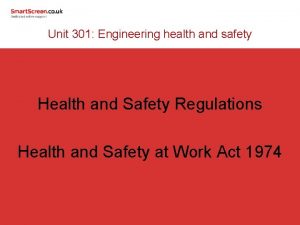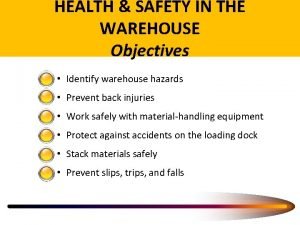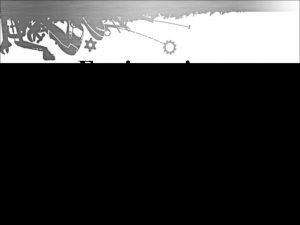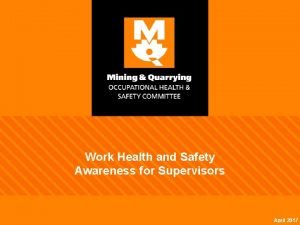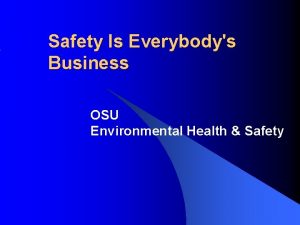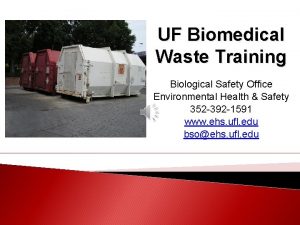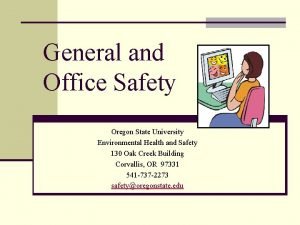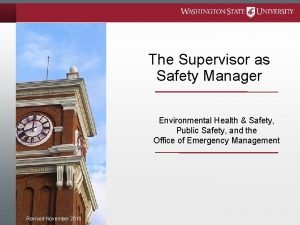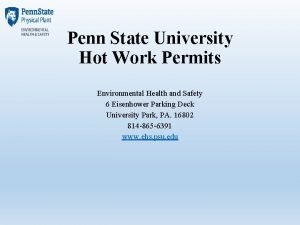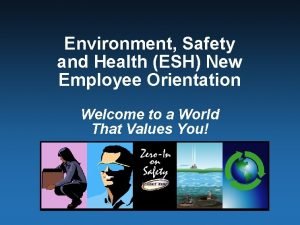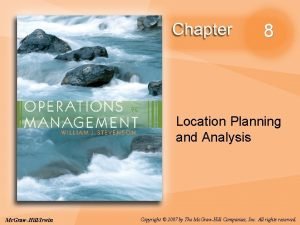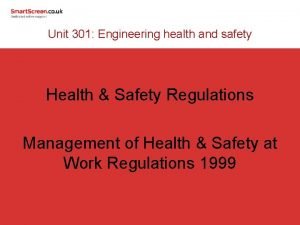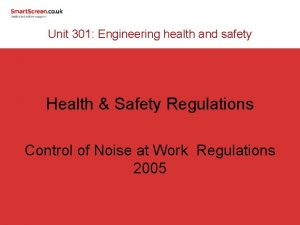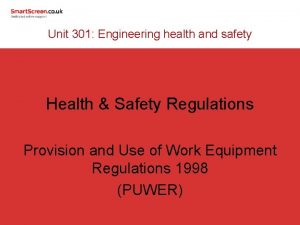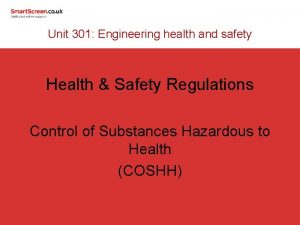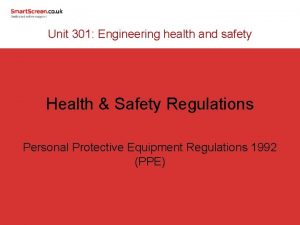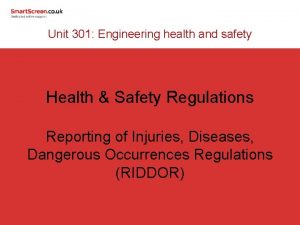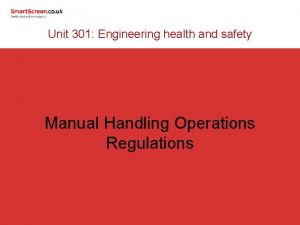Unit 301 Engineering health and safety Environmental Regulations












- Slides: 12

Unit 301: Engineering health and safety Environmental Regulations

Environmental Management Systems ISO 14001 • ISO 14001 sits within a set of standards (ISO 14000) designed to minimise the effect companies have on the environment • ISO 14000 is similar to ISO 9000 as it concentrates on the process not on the product • ISO 14001 contains the core standards used by companies to design and implement an environmental management system (EMS) • ISO 14001 does not stipulate requirements for performance but provides a framework for the management of environmental impact

Environmental Management Systems ISO 14001 can be used as a framework by any company that wants to: – – – improve resource efficiency reduce waste monitor its environmental impact minimise its environmental impact comply with environmental legislation.

Engineering Organisations and ISO 14001 • Engineering and manufacturing organisations can have a impact on the environment through their regular operation – Waste disposal • Waste oil from garages • Cooling water from production process • Scrap metal (recycling) – Production process • Car spraying companies • Welding fumes • Steam from power station cooling towers • Mine tailings

Environmental Regulations A range of regulations have been introduced to protect the environment: – – – Environmental protection act Pollution prevention and control act Clean air act Radioactive substance act Controlled waste regulations Dangerous substances and preparations and chemicals regulations – Hazardous waste regulations Acts and regulations are law

Environmental Protection Act • The enforcement of this act is the responsibility of the Environmental Agency (EA) and Scottish Environment Protection Agency (SEPA) • Its primary concern is the control of waste management and emissions into the environment • The act allows limits and controls to be prescribed to processes and substances in respect to their emissions into the environment • The act enables the licencing and regulating of controlled waste • Controlled waste is any household, industrial or commercial waste • Unauthorised disposal of controlled waste is unlawful and can lead to prosecution

Pollution Prevention and Control Act • The act controls pollution from identified industrial activities. • Relevant organisations must have a permit to operate. • The highest polluting industries are regulated by the Environment Agency: – – – Fuel and power production Metal production and processing Chemical industries Waste landfill sites Paper and pulp manufacturing • The lower polluting industries are regulated by local authorities.

Clean Air Act 1993 • The original clean Air Act (1956) was introduced in response to London’s great smog in 1952 that killed 12, 000 people and was so thick it stopped trains. • The 1993 Clean Air Act controls domestic and industrial emissions. • The Clean Air Act regulates: – smoke free zones – motor fuel – chimney heights for furnaces.

Radioactive Substance Act • The enforcement of this act is the responsibility of the Environmental Agency (EA) and Scottish Environment Protection Agency (SEPA) • Its main concern is the control of radioactive substances and waste • Organisations that keep and use radioactive materials and apparatus must be registered with EA/SEPA • Organisations must be authorised by EA/SEPA to accumulate and dispose of radioactive waste

Controlled Waste Regulations 2012 • The 1992 regulations gave waste collection authorities the power to charge for the collection of certain household waste • The 1992 regulations identified ‘schedule 2 institutions’ such as schools, hospitals and prisons • Local authorities could charge for collection, but not disposal from schedule 2 institutions • The 2012 regulations now allow charges for collection and disposal from schedule 2 institutions • Some organisations are exempt from charges including charity shops, further education colleges in England (Welsh colleges must pay)

Hazardous Waste Regulations • Hazardous waste is waste that will cause particular harm to human health or the environment • Hazardous waste, if mismanaged, can cause greater harm to the environment and human health than nonhazardous. • Strict controls apply from the point of its production, to its movement, management, and recovery or disposal • The production, transport and disposal of hazardous waste is covered by the regulations

Any questions?
 Health and safety regulations in engineering
Health and safety regulations in engineering Six pack health and safety regulations
Six pack health and safety regulations Loading dock safety
Loading dock safety Health and safety six pack regulations
Health and safety six pack regulations Work health and safety act 2012 sa
Work health and safety act 2012 sa Osu environmental health and safety
Osu environmental health and safety Eh&s uf
Eh&s uf Oregon state ehs
Oregon state ehs Wsu environmental health and safety
Wsu environmental health and safety Ehs penn state
Ehs penn state Esh environmental safety health
Esh environmental safety health Location planning in operations management
Location planning in operations management In location planning environmental regulations
In location planning environmental regulations
